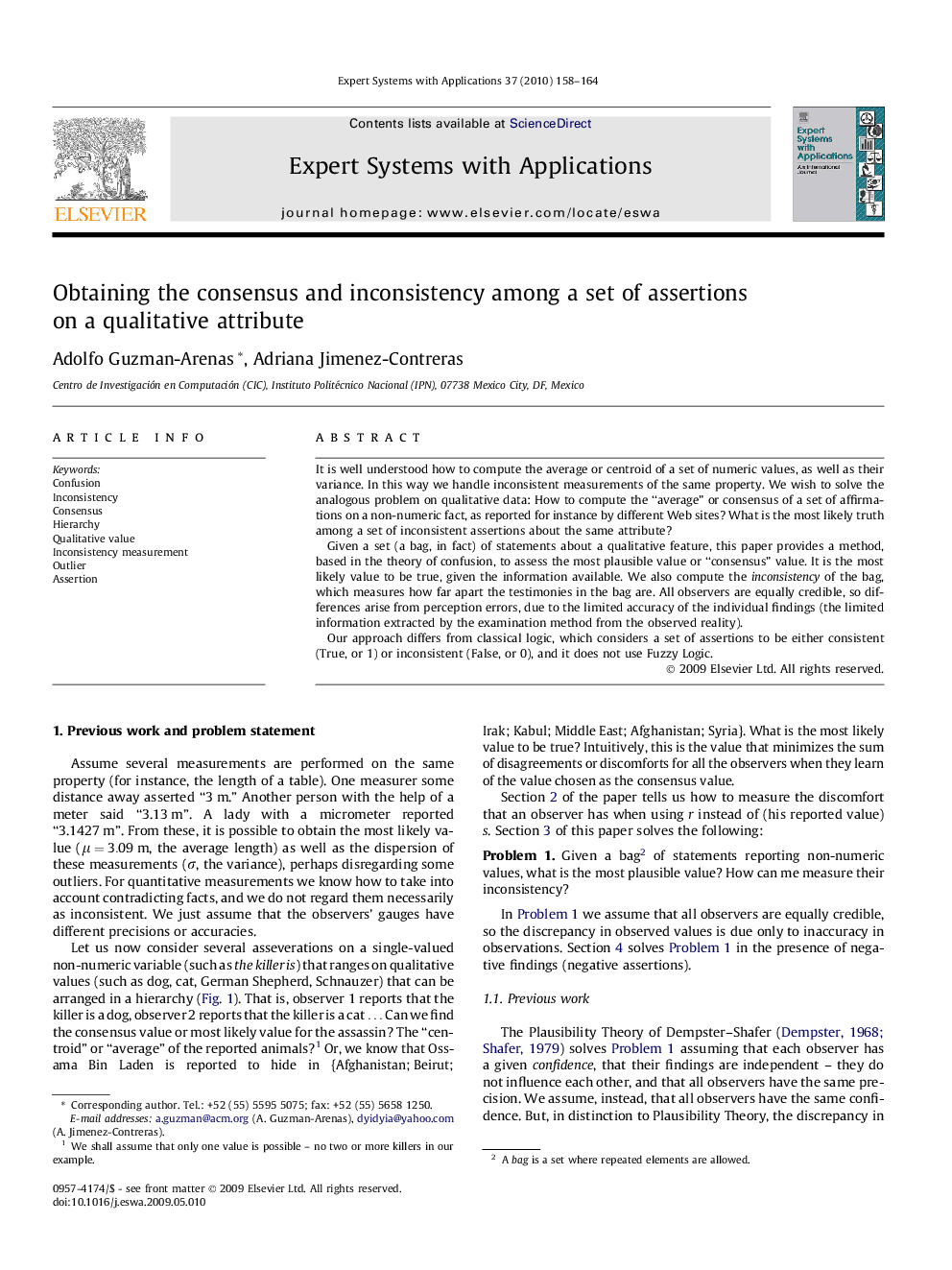| Article ID | Journal | Published Year | Pages | File Type |
|---|---|---|---|---|
| 387348 | Expert Systems with Applications | 2010 | 7 Pages |
It is well understood how to compute the average or centroid of a set of numeric values, as well as their variance. In this way we handle inconsistent measurements of the same property. We wish to solve the analogous problem on qualitative data: How to compute the “average” or consensus of a set of affirmations on a non-numeric fact, as reported for instance by different Web sites? What is the most likely truth among a set of inconsistent assertions about the same attribute?Given a set (a bag, in fact) of statements about a qualitative feature, this paper provides a method, based in the theory of confusion, to assess the most plausible value or “consensus” value. It is the most likely value to be true, given the information available. We also compute the inconsistency of the bag, which measures how far apart the testimonies in the bag are. All observers are equally credible, so differences arise from perception errors, due to the limited accuracy of the individual findings (the limited information extracted by the examination method from the observed reality).Our approach differs from classical logic, which considers a set of assertions to be either consistent (True, or 1) or inconsistent (False, or 0), and it does not use Fuzzy Logic.
